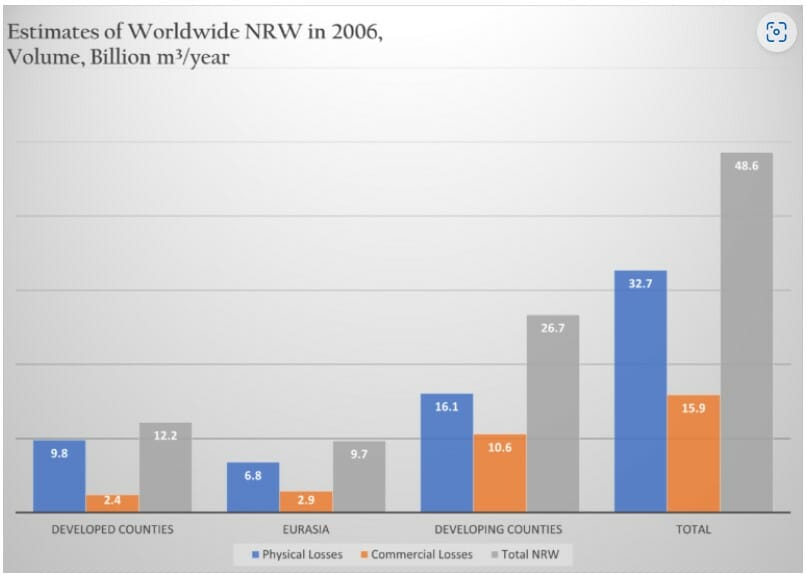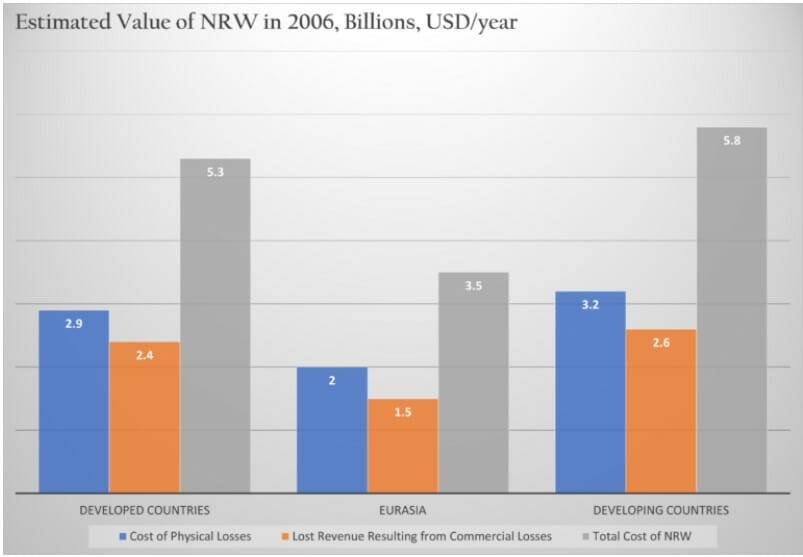Access to water is a very real challenge, as over 2 billion people in the world today have difficulty obtaining clean and properly treated water. The United Nations saw this concern as vital and pressing, making it a necessary addition to its Sustainable Development Goals, which highlights the aim for all members in global society to have access to clean water and sanitation by the year 2030.
Without factoring in the most severe instances of water scarcity such as those relating to drought and famine, on a global scale, the problem of water loss within water supply systems in both developed and developing countries has indeed been a worrying issue for some time. When we talk about non-revenue water, we are essentially talking about water which is lost in water distribution systems, either due to illegal tampering or from physical damage to water supply infrastructure. The quantity of water bleeding from such disruptions can be substantial, with about 45 billion cubic meters of water lost in developing countries every day, an amount that would have been able to meet the needs of 90 million people had it been preserved.
A study carried out by the Southeast Asian Water Utilities Network (SEAWUN) determined that among 47 water utilities in countries including Indonesia, Malaysia, Thailand and Philippines, the average amount of water loss was 30% of the water produced in those systems. The study also showed that water loss amounts varied greatly among countries, ranging from anywhere between 4 and 65 percent.
What are the causes of Non-Revenue water?
Non-Revenue Water includes any event in which water is lost resulting in a discrepancy between the amount of water initially supplied and the amount of water that reaches end users. The disruption of this supply of water can be broadly categorised into three areas which are physical losses, commercial losses, and unbilled authorised consumption.
Physical losses refer to disruptions which are caused by physical damage to water supply infrastructure or the malfunctioning of water piping systems, and can include leaks and breaks in transmissions mains, water piping, storage tanks, and distribution pipes.
Commercial losses, also referred to as apparent losses, are where water losses occur due to a deliberate theft of water from distribution networks or in which water meters are tampered with to reflect a different figure. There is also unbilled authorized consumption, which is water used by the utility for operational purposes, water used for firefighting, and water provided for free to certain consumer groups.
By and large, water losses which occur from NRW systems are difficult to identity, primarily because a large portion of these water piping systems are constructed underground and receive very little consistent oversight and monitoring. This also makes it difficult to determine the exact quantity or percentage of water which has been lost.
It is equally difficult for authorities to conduct the necessary preventative measures, as determining the specific area which requires attention can be a complex and lengthy process. Generally, it is only when a significant breakage or physical disruption occurs, which is visible on the surface, that authorities can provide any real and effective response.
Quantifying Non-Revenue Water
Getting a solid accounting of NRW is a vital step towards addressing and curbing this prevailing issue of water losses around the globe. The level of NRW indeed varies from country to country, however data collected from WHO shows that losses from NRW were most significant in developing counties, amounting to about 35% of total water input, while losses in Eurasia and developed countries were at 30% and 15% respectively.
The distribution of water losses between developed countries, Eurasia and developing counties in 2006, is shown here.
In terms of the value of losses incurred from NRW, the data indicates that more than $14 billion is lost each year by water utilities from NRW leakages, more than a third of which is attributed to water utilities in developing counties. The same study also indicates that a sizable portion of losses in developing counties ($2.6 billion) can be attributed to commercial losses, likely relating to theft or corruption. The diagram below shows the estimated value of losses from NRW between developed countries, Eurasia and developing counties.
27Group are strategic nation building consultants with a shared vision of rebuilding humanity.










